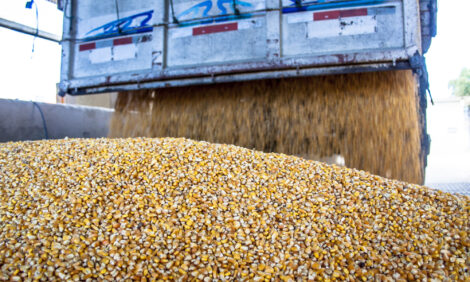



Weekly Overview: Porcine Epidemic Diarrhoea and the Need to Tight Biosecurity
ANALYSIS - New information points to the Porcine Epidemic Diarrhoea (PED) virus in the US has been transmitted by three routes - from pig to pig, on trucks and in the air. These highlight the vital importance of biosecurity procedures in helping to control the spread of the disease. Canada is soon to introduced a national swine traceability programme, which aims to aid the control of both animal and foodborne disease. A third outbreak of PRRS has been reported in Chile.Intense biosecurity measures and alertness are key in preventing Porcine Epidemic Diarrhoea (PED) from entering Europe as it has in the US, according to Bent Nielsen, the head of SPF Health Control and the Pig Diagnostic Lab at the Danish Pig Research Centre.
Speaking during the recent pig conference in Herning, he said that the spread of the disease in the US could have been made worse because of a lack of truck washing when pigs were taken to the slaughterhouse.
However, he said that although there have been cases in 2006 in Europe in Italy and Spain, the disease in Europe largely died out in the 1980s.
It is thought that the current epidemic in the US could have come from China and was either brought in through personal contact, feed or from a migratory bird. However, he added that the US has found that the transfer has not only been from pig to pig and from trucks but also that the disease has become airborne.
"Truck washing is highly critical and in some cases, they were not washing the trucks when they went to the slaughterhouse," Mr Nielsen said. "That has caused the rapid spread in the US."
The total number of positive tests for PED in the US has reached 924 in 18 states at the latest count - 68 more than the week before. Worst-affected states are North Carolina, Oklahoma and Kansas.
Two issues are dominating the news in the US pork industry, according to market analyst, Steve Meyer. These are the spread of the PED virus and the low levels of hog slaughter since 1 September. It is important to understand that the two issues are, at present, unrelated, he said. The timing simply does not match.
In Canada, the manager of PigTrace Canada expects the reporting of pig movements to accommodate swine traceability to become mandatory next summer.
The nation's pork industry has been working on the development of a traceability programme for pigs since 2002 and that programme is now ready for launch.
On other pig disease outbreaks around the world, Chile has reported its third outbreak of Porcine Reproductive and Respiratory Syndrome (PRRS; blue ear disease), all of them in the same area of Santiago.
A leading US pig academic is encouraging stock people to monitor sow herds more closely for signs of lameness and then take action to treat the problem.
Research has shown lameness affects anywhere from 10 to 60 per cent of the sow herd to some degree and has a profound effect on productivity.
Dr John Deen, a professor of swine production systems with the University of Minnesota, told a workshop on sow lameness, longevity and temperament in Winnipeg hosted by the Prairie Swine Centre and Swine Innovation Pork that lame sows produce fewer piglets and are less likely to remain pregnant if they are bred.







